Farmworkers in the US are struggling with unsanitary water in their homes, leading to unpleasant odors.
I
It is simple to recognize the homes of the farm laborers who work on the crops in the San Joaquin Valley, a major agricultural region in California. These homes are typically modest in size. In some cases, their location can be a clue – such as a mobile home situated near a dusty road and fields of pistachio trees. Other times, the presence of water can give away their location.
Leticia Compañ, a farm equipment operator, notices a contrast between the green yards in the eastern part of Fresno, California and the yellow yards in the western part. This division is seen along Route 41, where the wealthier, predominantly white community resides on one side while the other side is home to a primarily Latino population with lower incomes. Leticia and her family live in the latter area.
Insufficient water not only results in unsightly lawns, but also poses a major challenge for farm workers in the US. Studies, such as the one published in Environmental Justice, have revealed that these workers, primarily from Mexico and Central America, constantly struggle with tainted, expensive, or inadequate water in their households. This observation is also shared by the farm workers themselves.
Carmen Garcia, a farm worker who grows garlic, grapes, onions, and oranges, has concerns about the tap water in the west Fresno trailer she and her family are renting. “I occasionally use it, but it has an unpleasant smell,” she stated. (All of the farm workers interviewed in this area spoke Spanish and used an interpreter.)
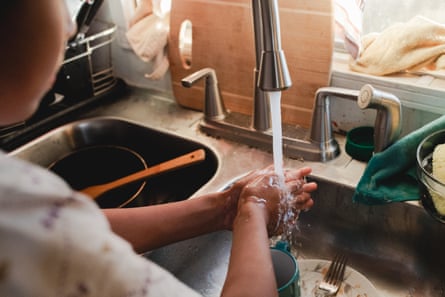
Her neighbor, Otilia Ortigoza, who also harvests multiple crops, says she’s gotten stomachaches and diarrhea from drinking water piped into the trailer she owns with her family of five.
As the summer of 2023 breaks heat records, advocates for farm workers are pushing for states to require water breaks in crop fields. Currently, only California, Colorado, Oregon, and Washington have permanent protections in place. However, Texas recently removed these protections in June. According to Bethany Alcauter, the director of research and public health programs at the National Center for Farmworker Health, workers in peak heat and humidity need to drink at least one liter of water per hour due to excessive sweating. She also stressed the importance of continuous hydration, noting that drinking a large amount of water after work is not enough to compensate for dehydration.
In a population of 2.6 million individuals, farm workers are 20 times more likely to die from heat-related illnesses compared to other workers. This chronic dehydration can lead to short-term symptoms such as fatigue, dizziness, nausea, and vomiting, as reported by Laszlo Madaras, the chief medical officer of the Migrant Clinicians Network (MCN). In the long term, dehydration can result in kidney stones, hypertension, obesity, diabetes, and acute kidney injury (AKI). The combination of repetitive dehydration, loss of minerals through sweating, and potential exposure to pesticides has led to an increase in chronic kidney disease (CKD) among farm workers, which can be fatal and may require dialysis. While the exact causes of some forms of CKD are still unknown, Madaras notes that there is a correlation between rising temperatures and an increase in cases.
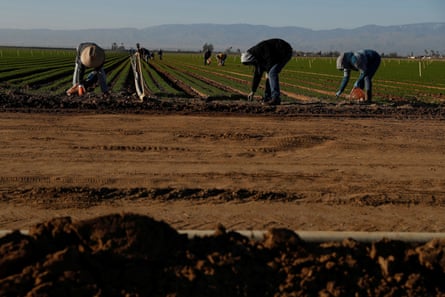
A study conducted in 2018 found that more than half of the farm workers examined were dehydrated before beginning work. These workers often reside in cramped, non-air-conditioned housing without access to cooling methods. In addition, their accommodations may not have a supply of clean drinking water, making it difficult for them to rehydrate while working in agriculture.
In Fresno, there have been reports of 53 different contaminants in the water, including chromium, uranium, and PFAS chemicals that are known as “forever chemicals.” Of these contaminants, 17 have been found in levels higher than what is recommended by the Environmental Working Group (EWG). However, it should be noted that just because a contaminant is legally allowed in the water, it does not mean it is safe according to the latest health guidelines.
Blanca Gomez, a resident of Cantua Creek, a small town with less than 500 people located 40 miles to the southwest, stated that the wells in the area are contaminated with manganese. Despite reports from the local water system claiming that the water is safe to drink, residents are aware of its contamination.
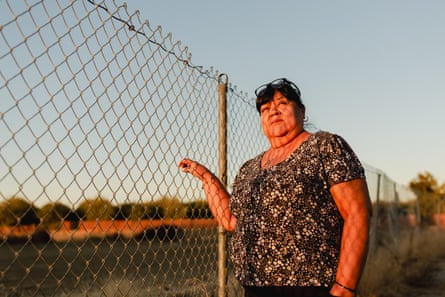
The wells that provide water for the 75 homes of farm workers in Tooleville, located in Tulare county, often become depleted or polluted with nitrate and chromium. Jessi Snyder, program director for Self-Help Enterprises (SHE), stated that trucks have to bring in water multiple times a day in order to ensure that people can continue living in their homes. SHE is a community development organization that works to address unequal access to housing and water services, as well as the resulting health disparities.
According to Snyder, farm laborers who buy bottled water are essentially paying twice for their water. This, along with the cost of monthly water services reaching up to $100, puts a strain on the budgets of families earning less than $30,000 annually. As a result, it takes away funds that could be used for essential expenses such as food, rent, and gas.
The organization SHE is implementing initiatives to renovate and improve water systems in the San Joaquin Valley. They are also constructing affordable housing, with a focus on farm workers, utilizing funding from both federal and state sources.
Snyder stated that having access to quality, affordable housing and clean, safe drinking water is essential for survival. However, guaranteeing this access is not without its difficulties. The town of Richgrove, where SHE previously aided in constructing housing for farm workers in the 1990s, now faces contamination in their wells from arsenic, nitrates, and DBCP, an agricultural chemical. While a new well and storage tank are being built, the households in the complex must ration the 20 gallons of water they receive monthly from SHE.
Nora Virgen, a grape picker, stated that this impacts all daily routines, such as preparing coffee, making lunch, and taking a shower. It also increases the workload on already tiring days and alters dietary choices. Virgen and Ortigoza have stopped making dishes like soups and beans due to their high water usage.
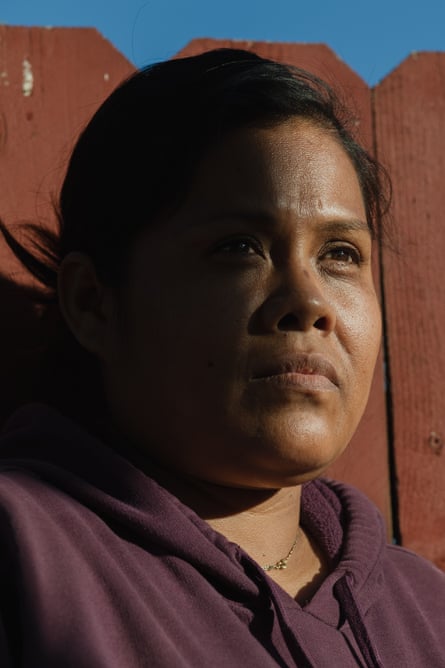
The location of a farm worker’s residence determines who is responsible for their tap water. According to the MSPA, which is a federal law that protects migrant and seasonal agricultural workers, farmers are required to provide an “adequate” supply of water for drinking, cooking, bathing, and laundry. This amount must be at least 35 gallons per person per day and meet state health standards. However, as stated by EWG, just because something is legally required does not guarantee its safety. Amy Liebman, the chief program officer for workers, environment, and climate at the Migrant Clinicians Network, explained that inspections of these housing facilities typically occur at the beginning of a harvest season when everything appears to be in good condition. However, as she pointed out, when there are 100 people living in one camp with only one septic system, there is a higher risk of contamination in the water supply.
Farm laborers typically secure housing through the private market, which falls outside the scope of the MSPA. In rural farming areas, a residence may not be regulated by the Safe Drinking Water Act, as it only applies to “public” water systems serving over 15 households. Therefore, it is the responsibility of individuals to ensure the safety of their own water, according to Liebman.
Public wells may run out of water or become polluted, which is becoming increasingly common due to the depletion of aquifers by industrial farming and worsening droughts caused by climate change. Building new wells is very expensive and often beyond the financial means of farm worker communities. It can also be a lengthy process – for example, Cantua Creek has been waiting for new wells since 2018. Temporary solutions to ensure safe drinking water may not be very effective.

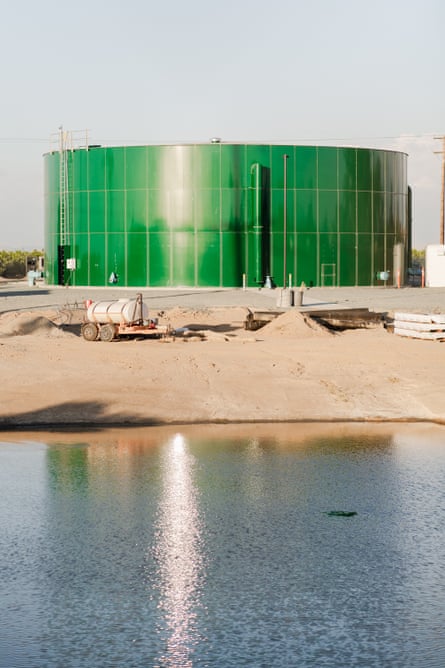
The town of Allensworth, located 70 miles south of Fresno, faced a water crisis in 2013 when arsenic was discovered in its water supply. It is not until 2025 that new wells and storage tanks will be operational. In the meantime, 50 homes in the town have received hydropanels that extract water from the air, providing a solution to the reliance on bottled water. One resident, Kayode Kadara, who is not a farm worker, praised the hydropanels as a “miracle” for the isolated community. However, each customer is only able to receive 2 gallons of water per day and some neighbors have reported issues with the panels and have disconnected them.
The use of home water filters is common in west Fresno by Kadara and Compañ. Jerry Tinoco, the regional field manager at Rural Community Assistance Corporation (RCAC), a California-based affordable-housing developer, stated that fully recommending them is difficult. In an email, Tinoco explained that a filter’s lifespan can vary due to factors such as manufacturer specifications, water flow rate, and levels of contaminants. It is important to periodically replace filters, as incorrect replacement can lead to a concentration of contaminants or growth of bacteria or algae. Therefore, it is essential and logical to ensure that the water is clean before it enters the pipes.
In order to lower the expenses of digging new wells, RCAC or SHE may choose to “oversize” by constructing a well that can supply water to 50 apartments, as well as an additional 200 apartments built by another developer who pays for its use. Alternatively, “consolidation” may be an option for a community to access a well in a nearby town – although some towns may oppose this. According to SHE’s president, Tom Collishaw, as water becomes increasingly scarce, “nobody wants water to leave their area.”

Nonetheless, a recent SHE advancement in Farmersville, known as Los Arroyos, effortlessly accessed the nearby Cameron Creek. Collishaw referred to it as “the most exceptional partnership story.” This also serves as an example of what fair and just farm worker housing can resemble when developers genuinely prioritize it: situated near educational institutions, employment opportunities, and grocery stores; equipped with facilities such as playgrounds and community centers; and containing pristine, spacious apartments with an abundance of drinkable water coming through the faucets.
The existence of Los Arroyos underscores the fact that farm workers in so many other places are still living in subpar housing, with no clean water in sight. “I feel stress … and desperation … and like I’m not valued,” said Ortigoza of west Fresno. “We are the ones collecting food for the tables of [our employers], and sometimes I feel that we are nothing but a tool for them to make profit. And we are suffering.”
and Sustainability.
This piece was made possible by the financial backing of the Nova Institute for Health and Sustainability.
Source: theguardian.com



